#eurasia steppes
Text
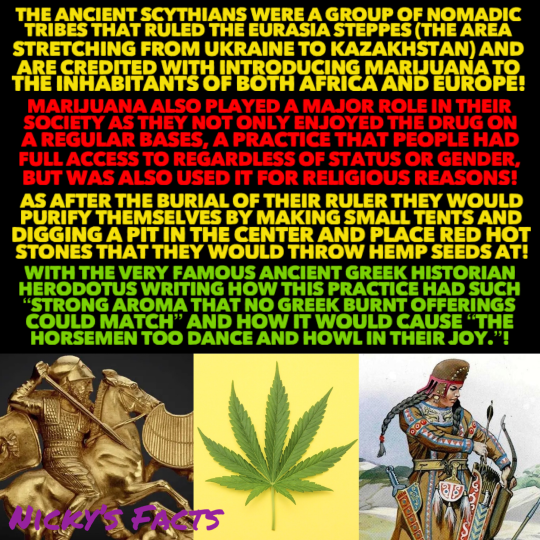
Scythians were the masters of the horse, the bow, and the hemp!😄
🐴🏹🌿
#history#scythians#ancient#marijuana#central asia#amazonians#scythian history#herodotus#hemp seeds#eurasia steppes#ukraine#kazakhstan#nomadic#ancient history#horsemen#horsewomen#weed#ancient religious practices#drugs#central asian history#nickys facts
11 notes
·
View notes
Text

Qazaq Handygy. Altyn Taq. (Kazakh Khanate: Golden Throne), 2019, Rustem Abdrashev
#kazakh#central asia#kazakhstan#cinema#films#film stills#eurasia#eurasian steppes#kazakh cinema#kazakh films#central asian films#central asian cinema
39 notes
·
View notes
Text
The tag "Indigenous Russian" is a means of giving attention to groups that are Indigenous within the Russian Federation. These people are Indigenous. Not Russian. It's difficult to explain without the tag and using it as a means of correlation otherwise the association would be more challenging to find. The Indigenous are mostly populated in the steppes, Siberia, Eurasia, and in the Caucasus. I do my best to bring awareness to these groups as there is active erasure happening.
#indigenous#culture#indigenous russia#indigenous russian#russia#important#fypシ#colonization#fypage#landback#Siberia#Eurasia#indigenous people#steppes
26 notes
·
View notes
Note
Batman sometimes asked the rogues to keep their villainy at a minimum when his at the time Robin had a big test the coming week.
They don't. Instead, they bombard them with study trivia while fighting.
Two-Face: What's the derivative of y = (√2x - 3)/6?
Duke: √2/6. *punches Two-Face*
Ivy: What's the proper name of a temperate grassland biome?
Damian: Savannahs in Africa, steppes in Eurasia, pampas in South America, and prairies in the North. *slices through her plants* Give me a real challenge.
Killer Croc: Define a vestigial organ and name three examples.
Dick: They're rudimentary anatomical structures that are retained in a species despite having lost their primary ancestral function. *flips behind him* Like the appendix, wisdom teeth, and tonsils.
Harley: I hate this guy as much as any self-respecting psychologist, but who was the founder of psychoanalysis?
Steph: Ugh, Freud. Can we get back to the car chase?
Riddler: Riddle me this. I'm thinking of a failed military operation in 1961 aimed to overthrow Fidel Castro's government.
Tim: What is the Bay of Pigs? *throws a batarang* And why did I answer that like a Jeopardy question?
Mad Hatter: What point about humanity was William Golding making in Lord of the Flies?
Jason: Trick question. It's a satire written in response to popular works of the time depicting young privileged boys as successful in their adventures and aimed to showcase the more accurate behavior of that particular demographic when faced with isolation and uncertainty.
*explosions*
#dick grayson#nightwing#jason todd#red hood#tim drake#red robin#damian wayne#robin#duke thomas#signal#stephanie brown#spoiler#two face#poison ivy#killer croc#harley quinn#riddler#mad hatter#gotham rogues#batfam#batfamily#batboys#batbros#batgirls#batkids#batsiblings#batman family#batman#dc comics#headcanon
3K notes
·
View notes
Photo
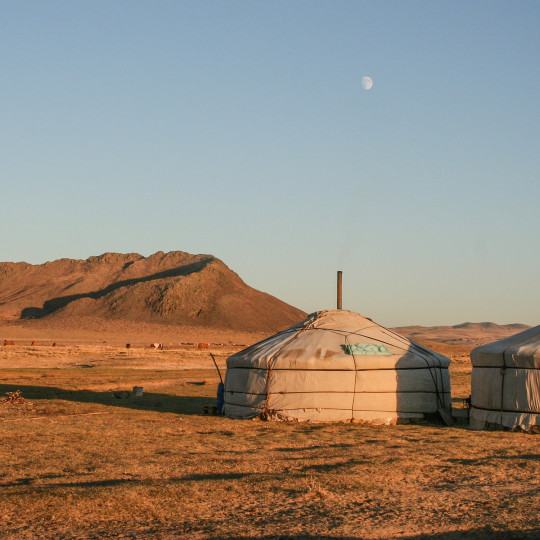
Yurt
A yurt (ger in Mongolian) is a large circular tent made of wool felt stretched over a wooden frame used by nomadic peoples of the Asian steppe since before written records began. Yurts are especially associated with Mongol herders and hunters and were famously used by such figures as Genghis Khan (r. 1206-1227 CE). Made in various sizes and even sometimes permanently erected on top of carts for ease of mobility, yurts have become one of the identifying features of the nomads who still today carve out a living in the often harsh climate of the remotest parts of Eurasia.
Continue reading...
236 notes
·
View notes
Text

Female Europid Mummy from the Necropolis of Subexi III, Grave M6, Turfan District, Xinjiang. 5th-3rd C. BCE. Source: Baumer, Christoph.The history of Central Asia. Vol.1. The age of the steppe warriors. London : I.B. Tauris, 2012. pg. 218 left DS329.4 .B38 2012. Image via University of Pennsylvania. See maps in the post before this one for a better understanding of the geography discussed.
"Section 26 – The Kingdom of Nearer [i.e. Southern] Jushi 車師前 (Turfan)
1. ‘Nearer Jushi’ 車師前 refers to the kingdom or state centered in the Turfan oasis or, sometimes, to the tribe which controlled it. There can be no question that Nearer Jushi refers here to the Turfan Oasis. See for example: CICA, p. 183, n. 618; also note 1.5 above. For the etymology of the name Turfan see Bailey (1985), pp. 99-100, which is summed up in his sentence: “The name turpana- is then from *druva-pāna- ‘having safe protection’, a name suitable for a walled place.”
“One other oasis town is currently under excavation. At Yarghul (Jiaohe), 10 km (16 miles) [sic – this should read 10 miles (16 km)] west of Turpan, archaeologists have been excavating remains of the old Jushi capital, a long (1,700 m (5,580 ft)) but narrow (200 m (656 ft)) town between two rivers. From the Han period they uncovered vast collective shaft tombs (one was nearly 10 m (33 ft) deep). The bodies had apparently already been removed from these tombs but accompanying them were other pits containing form one to four horse sacrifices, with tens of horses for each of the larger burials.” Mallory and Mair (2000), pp. 165 and 167.
“Some 300 km (186 miles) to the west of Qumul [Hami] lie [mummy] sites in the vicinity of the Turpan oasis that have been assigned to the Ayding Lake (Aidinghu) culture. The lake itself occupies the lowest point in the Turpan region (at 156 m (512 ft) below sea level it is the lowest spot on earth after the Dead Sea). According to accounts of the historical period, this was later the territory of the Gushi, a people who ‘lived in tents, followed the grasses and waters, and had considerable knowledge of agriculture. They owned cattle, horses, camels, sheep and goats. They were proficient with bows and arrows.’ They were also noted for harassing travellers moving northwards along the Silk Road from Krorän, and the territories of the Gushi and the kingdom of Krorän were linked in the account of Zhang Qian, presumably because both were under the control of the Xiongnu. In the years around 60 BC, Gushi fell to the Chinese and was subsequently known as Jushi (a different transcription of the same name).” Mallory and Mair (2000), pp. 143-144.
“History records that in 108 BC Turpan was inhabited by farmers and traders of Indo-European stock who spoke a language belonging to the Tokharian group, an extinct Indo-Persian language [actually more closely related to Celtic languages]. Whoever occupied the oasis commanded the northern trade route and the rich caravans that passed through annually. During the Han Dynasty (206 BC-AD 220) control over the route see-sawed between Xiongnu and Han. Until the fifth century, the capital of this kingdom was Jiaohe.” Bonavia (1988), p. 131.
“Turpan is principally an agricultural oasis, famed for its grape products – seedless white raisins (which are exported internationally) and wines (mostly sweet). It is some 80 metres (260 feet) below sea level, and nearby Aiding Lake, at 154 metres (505 feet) below sea level, is the lowest continental point in the world.” Ibid. p. 137.
“The toponym Turfan is also a variation of Tuharan. Along the routes of Eurasia there are many other place names recorded in various Chinese forms that are actually variations of Tuharan.” Liu (2001), p. 268."
-Notes to The Western Regions according to the Hou Hanshu. Second Edition (Extensively Revised and Expanded). John E. Hill. University of Washington.
#tocharian#celtic#indo european#tarim basin#xinjiang#chinese history#mummies#history#ancient history#archaeology#anthropology#silk road#pagan
458 notes
·
View notes
Text
70 notes
·
View notes
Text
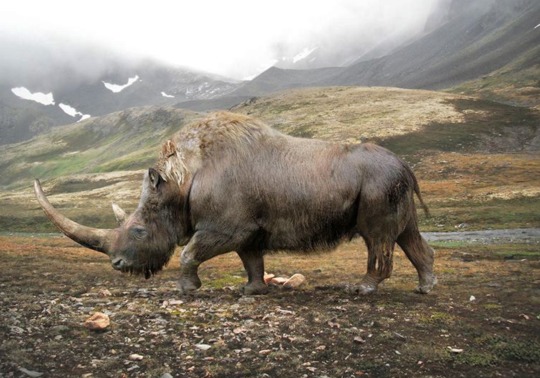
†Woolly rhinoceros (Coelodonta antiquitatis)
Art credit: Roman Uchytel
You’ve probably heard of this animal before- a giant, woolly-coated relative of modern rhinos with a metre-long horn. It lived in a habitat which covered most of northern Eurasia for 100,000 years, before disappearing abruptly 12,000 years ago at the end of the last ice age: the mammoth steppe. This was a cold, dry grassland which often snowed, and was inhabited by mammoths, bison, reindeer, horses, saiga antelope, mountain sheep, cave lions, wolves, and a variety of other animals. Here, the woolly rhinoceros was one of the largest herbivores, eating grasses and shrubs. Humans encountered these animals, and cave drawings made by prehistoric artists give us clues to their life appearance and behaviour.
#markhors-menagerie#animal facts#animals#biology#fun facts#palaeontology#prehistoric animals#ungulates#odd toed ungulates#rhinoceros#woolly rhinoceros#Coelodonta
94 notes
·
View notes
Photo

“Women were included in the ranks of this fully mobilized society. Prokopios, aware, of course, of the legends of the Amazons whose origins he traces to the region of the Sabirs, reports that in the aftermath of "Hunnic" (i.e. Sabir) raids into Byzantine territory, the bodies of women warriors were found among the enemy dead. East Roman or Byzantine sources also knew of women rulers among the nomads. Malalas, among others, mentions the Sabir Queen Boa/Boarez/Boareks who ruled some 100,000 people and could field an army of 20,000. In 576 a Byzantine embassy to the Turks went through the territory of 'Akkayai; "which is the name of the woman who rules the Scythians there, having been appointed at that time by Anagai, chief of the tribe of the Utigurs." The involvement of women in governance (and hence in military affairs) was quite old in the steppe and was remarked on by the Classical Greek accounts of the Iranian Sarmatians. It was also much in evidence in the Cinggisid empire.
These traditions undoubtedly stemmed from the necessities of nomadic life in which the whole of society was mobilized. Ibn al-Faqih, embellishing on tales that probably went back to the Amazons of Herodotos, says of one of the Turkic towns that their "women fight well together with them," adding that the women were very dissolute and even raped the men. Less fanciful evidence is found in the Jiu Tangshu which, s.a. 835, reports that the Uygur Qagan presented the Tang emperor with "seven women archers skillful on horseback.” Anna Komnena tells of a Byzantine soldier who was unhorsed with an iron grapple and captured by one of the women defenders as he charged the circled wagons of the Pecenegs. Women warriors were known among the already Islamized Turkmen tribes of fifteenth century Anatolia and quite possibly among the Ottoman gazfs (cf. the Bacryan-z Rum "sisters of Rum")”.
Golden Peter B., “War and warfare in the pre-cinggissid steppes of Eurasia” in: Di Cosmo Nicola (ed.), War and warfare in Inner Asian History
#history#women in history#warrior women#warriors#Akkayai#6th century#historyedit#historyblr#central asia#scythians#sarmatians
58 notes
·
View notes
Text
Paleolithic Commerce

40,000 years ago on the grassy steppes of Pleistocene Europe, a Neanderthal trader plies some exquisite furs of his to an Aurignacian (Homo sapiens) couple. Although modern humans like the Aurignacians would end up displacing the Neanderthals in Europe, some peaceful interactions between the two hominin lineages must have taken place, especially considering the genetic evidence for interbreeding between them in Eurasia.
#neanderthal#homo sapiens#aurignacian#paleolithic#prehistoric#pleistocene#paleoanthropology#anthropology#paleoart#black people#people of color#poc#digital art#art
63 notes
·
View notes
Text

A Male Saiga Antelope in Russia's Black Land National Park. These highly social antelope live in herds. Photograph By Valeriy Malee/Nature Picture Library
This Floppy-Nosed Antelope Was Nearly Gone. 20 Years Later, It’s Thriving.
Less than a decade ago, more than half of the world’s saiga antelope were lost to a mysterious disease. Its comeback is a rare and phenomenal conservation success.
— By Jason Bittel | December 14, 2023
Just two decades ago, it seemed as if we might need to write a eulogy for the saiga antelope.
Cut down by widespread poaching and waves of disease, by 2003, just 6 percent of the floppy-nosed ungulates remained in Kazakhstan, Mongolia, Russia, and Uzbekistan.
But today, scientists are rejoicing at the saiga’s unlikely rebound.
There are now 1.9 million saiga antelope across Eurasia, according to the most recent estimates released this week. So many saiga, in fact, that the International Union for Conservation of Nature is upgrading the Red List status for the species from critically endangered to near threatened.
“There's a lot of conservation doom and gloom, and there isn't very much attention paid to conservation successes,” says E.J. Milner-Gulland, a conservation scientist at the University of Oxford and co-founder of the U.K-based Saiga Conservation Alliance. “It’s quite a vindication of 20 years of hard work by lots of people.”
To get a sense of just how far this species has come, in 2015, more than half of the worldwide population of saiga antelope were lost to a mysterious blood disease.
“This is phenomenal news,” says Joel Berger, an ecologist at Colorado State University and a senior scientist at the Wildlife Conservation Society, in an email.
“At a time when so many species and populations are in deep swan dives, to witness the recovery of saiga—a species deserving of more recognition in its own right—is something we all need to celebrate,” he says.
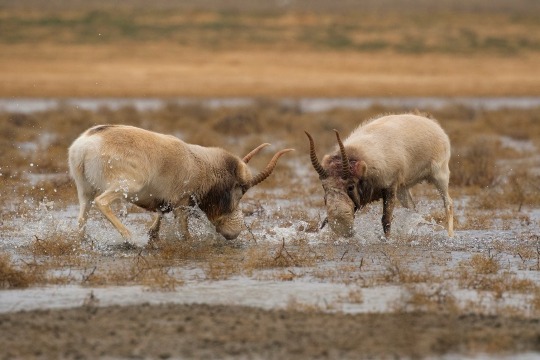
Male Saiga Antelope Battle in Black Lands National Park. Males and their horns are a specific target of poachers. Photograph By Valeriy Malee/Nature Picture Library
The Saiga’s Downward Spiral
Those who have been paying attention to the saiga’s saga know that it’s been a wild ride.
“Twenty years ago, it had the fastest increase in threat status of any mammal,” says Milner-Gulland. “The population had plummeted by more than 90 percent over a really short time of a few years, so it went straight in at critically endangered.”
As for what happened, Milner-Gulland explains that the saiga’s downfall can be attributed to several factors. For starters, saiga horn has great value in China, Singapore, Vietnam, and Malaysia as a component in traditional medicine. And this demand, coupled with the breakup of the Soviet Union, led to a dramatic rise in hunting.
It’s a Symbol of the Wild Steppe, of Independence and Freedom.
— E.J. Milner-Gulland, Conservation Scientist at the University of Oxford
“The economies of these countries basically collapsed,” she says. “And they were living in very harsh conditions on the steppe. So they turned to poaching.”
Fencing along the border between Kazakhstan and Uzbekistan also put a barrier in the middle of the saiga’s migratory route, while infrastructure development cut into saiga habitat. Finally, an unknown trigger turned a naturally occurring microbe in the saiga’s characteristic nose into a virulent pathogen, leading to the mass die-offs.
It’s for all these reasons that the IUCN has chosen not to de-list the saiga completely.
“The near threatened category is right for the saiga, because we know that at any time, we could just get large numbers of them dropping dead again,” says Milner-Gulland. “They are very vulnerable.”
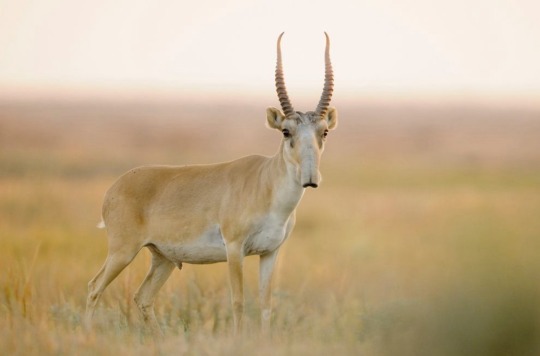
A Path to Recovery
Just as the threats to the saiga were multi-faceted, so too have been the efforts to protect the species, which are important seed dispersers and grazers that contribute to plant biodiversity.
For instance, an international collaboration between countries where saigas roam, countries that traditionally consume saiga products, and other stakeholder nations, including the United States, led to a memorandum of understanding in 2006 to conserve the species, restore its habitat, and restrict harvest to a sustainable level.
For its part, Kazakhstan’s government focused on stronger anti-poaching measures, including law enforcement to prevent saiga hunting. The Saiga Conservation Alliance supplied financing for gasoline, uniforms, motorbikes, and shelters for those rangers, who live in the harsh, windswept grasslands. Customs agents also improved detection of saiga products leaving the country as part of the illicit wildlife trade. Lastly, the country designated multiple protected areas totaling more than 12 million acres of saiga antelope habitat.
Now that economic conditions have leveled out and local people don’t have to choose between their own survival and saving saiga, there has also been a dramatic shift in support for the species.
“The thing about saiga is the local people really love it,” says Milner-Gulland. “It’s a symbol of the wild steppe, of independence and freedom.”
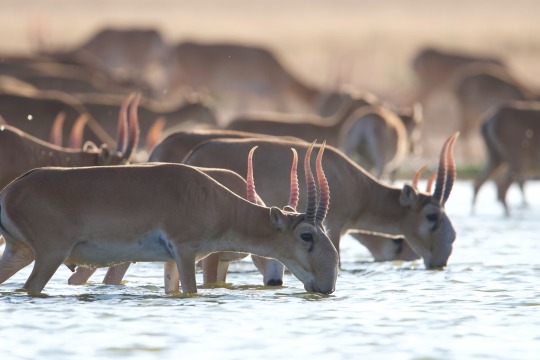
Saiga (Drinking on Southern Russia's Astrakhan Steppe) can migrate up to 600 miles over summer and winter. Photograph By Valeriy Malee/Nature Picture Library
#Animals 🦓 🦒 🐘#Floppy Nosed Antelope#Kazakhstan 🇰🇿 | Mongolia 🇲🇳 | Russia 🇷🇺 | Uzbekistan 🇺🇿#University of Oxford#Saiga Antelope#China 🇨🇳 | Singapore 🇸🇬 | Vietnam 🇻🇳 | Malaysia 🇲🇾#E.J. Milner-Gulland | Conservation Scientist | University of Oxford
41 notes
·
View notes
Text
While herbivores diversified in the new Afro-Laurasian environment, generalists of all sizes, thanks to the very nature of their lifestyle, thrived almost undisturbed and were able to greatly expand their ranges.

Basal pigs, badgers and rodents all benefited from the interchange, but a new group, part of a lineage of smaller more basal elagids, the squealing heers (Eobrachylagus), in response to the new pressures expanded their diet and became more omnivorous, exploiting various feeding strategies such as scavenging, oophagy and insectivory, and becoming an extremely common animal across the continent, especially common around the tropical and subtropical areas.

Monkeys were mostly unaffected by the event, mostly inhabiting areas far from its contact points. Other than some baboons and other semiterrestrial cercopithecids reaching the northern coasts of the Mediterranean, the only lineage of primates that crossed into another continent was a descendant of Japanese macaques. Its ancestors island hopped to the mainland shortly before the interchange, and thanks to their adaptations to colder environments were able to quickly colonise the coasts of Siberia, and with the closing of the Bering strait to cross into North America. They didn’t radiate into many forms and are currently represented by a single species part of a monotypic genus, the Rockies snow monkey (Smithopithecus montanus). They inhabit a range that goes from Yukon to the rockies, and thus rarely interact with other native North American primate species, although young individuals sometimes come down to the prairies in search of better foraging grounds, where they’re confronted by the hostile macaca baboons (most Cyonuropithecini).

Weird specialists, such as the myrmecophages, were also affected by the interchange. The only major lineages present across the continents are African pangolins, spiny anteaters (hedgehogs that were able to become the dominant myrmecophages in Eurasia thanks to the extinction of the Asian pangolins), and tamanduas that rarely cross into the grasslands and steppe of North America. The latter were hardly affected, spiny anteaters, instead, thrived, with a range going from Florida to the Cape of Good Hope, at the expense, tho, of pangolins, whose only survivors were small arboreal forms in the Congo rainforest.
#spec evo#spec bio#speculative evolution#speculative biology#worldbuilding#artwork#digital art#epigene period#future earth
16 notes
·
View notes
Note
Can you explain the Hyperboera theory please? Is it the white people version of the Yakub thing?
The Hyperborea theory is actually more based in reality than the fantasy of Yakub, and like all good things, we begin with Greek Myth.
In Greek myth, Hyperborea was a land located to the far north of the known world, it was so remote it was considered even beyond the North Wind.
There a legendary race known as the Hyperboreans lived, and worshipped the sun god Apollo.
Herodotus wrote that the 7th century BC, the poet Aristeas wrote of the Hyperboreans in a poem called Arimaspea, about a journey to the Issedones, who are estimated to have lived in the Kazakh Steppe.
Beyond these lived the one-eyed Arimaspians, further on the gold-guarding griffins, and beyond these the Hyperboreans.
Herodotus assumed that Hyperborea lay somewhere in Northeast Asia.
Homer placed Boreas in Thrace, and therefore Hyperborea was in his opinion north of Thrace, in Dacia.
Heraclides Ponticus and Antimachus in contrast identified the Riphean Mountains with the Alps, and the Hyperboreans as a Celtic tribe (perhaps the Helvetii) who lived just beyond them.
Aristotle placed the Riphean mountains on the borders of Scythia, and Hyperborea further north.
Hecataeus of Abdera and others believed Hyperborea was Britain.
Later Roman, and Greek sources continued to change the location of the Riphean mountains, the home of Boreas, as well as Hyperborea, which was supposedly located beyond them.
However, all of the sources agreed the locations of the mountains and Hyperborea were far north of Greece and southern Europe.
Simmias of Rhodes in the 3rd century BC connected Hyperborea to the Massagetae and Posidonius in the 1st century BC to the Western Celts, but Pomponius Mela placed them even further north in the vicinity of the Arctic.
This final connection was what stuck in the minds of those who would later propose a location for Hyperborea.
However, later writers disagreed on the existence and location of Hyperborea, with some regarding it as purely mythological, and others connecting the Hyperboreans to real-world peoples and places in northern Eurasia (ie. Britain, Scandinavia, or Siberia).
In medieval and Renaissance literature, the Hyperboreans came to signify remoteness and exoticism.
Modern scholars consider the Hyperborean myth to be an amalgam of ideas from ancient utopianism, "edge of the earth" stories, the cult of Apollo, and exaggerated reports of phenomena in northern Europe known as the Arctic or "midnight sun."
Since Herodotus places Hyperborea beyond the Massagetae and Issedones, both Central Asian peoples, it appears that his Hyperborea may have been in Siberia.
Heracles sought the golden-antlered hind of Artemis in Hyperborea. As the reindeer is the only deer species of which females bear antlers, this would suggest an arctic or subarctic region.
This has led some to believe that the Chinese are Hyperboreans, while others deny this as Reindeer also appear in Northern Europe, meaning Heracles could have sought the thr golden-antlered hind of Artemis in Scandinavia, meaning Hyperborea could have been Norse.
It would be this connection that stuck.
Hyperborea in Greek myth however was not an icy land, it was a warm, sunny land that existed beyond Boreas, who was credited for creating cold climates.
However, the idea of Hyperborea being in the Arctic is the idea that stuck.
Now, this ask was in context to the Indo-European hypothesis, which stipulates that the people who became Indo-Europeans came from Hyperborea, which is correct and incorrect, while yes, the Indo-European people's all come from the same tribal lineage, we did not emerge from the Arctic during an ice age.
Now, this idea stuck itself in the minds of both Russian and Indian nationalists, this was inspired by the works of Bal Gangadhar Tilak in his The Arctic Home in the Vedas, and the Austro-Hungarian ethnologist Karl Penka in his Origins of the Aryans.
Soviet Indologist Natalia R. Guseva and Soviet ethnographer S. V. Zharnikova, influenced by the works, argued for a northern Urals Arctic homeland of the Indo-Aryan and Slavic peoples.
This never caught on outside of Russia and India.
All of this, right now, is plausible, Indo-European people's did come from the same tribal bands of Proto-Indo-Europeans that swept across, and subsequently conquered Eurasia, and North Africa, they did originate from either the steppes of central Asia or the mountains of eastern Europe, their land would have been an alien landscape to the ancient Greeks who would hear of this land beyond Boreas through oral traditions, and so on.
Now, we get into the part that makes the Hyperborea theory, like the Yakub theory, and like all absurd things, we can thank the French.
Robert Charroux first related the Hyperboreans to an ancient astronaut race of "reputedly very large, very white people" who had chosen "the least warm area on the earth because it corresponded more closely to their own climate on the planet from which they originated".
This stuck, and then evolved over the decades to become the modern Hyperborea meme, which claims white people were created, or are aliens, destined to rule the world from beneath the Arctic, or the moon, and the Nazis are also there;
24 notes
·
View notes
Text
(via) This paper (preprint) essentially argues that the Indo-European expansion into Europe was accompanied by zoonotic plagues which arose in the Steppe, to which the IEs were adjusted (gently, via "long-term continuous exposure") and the Early European Farmers (the neolithic inhabitants of Europe) were not. They analogize this to the plagues which afflicted the Americas after the arrival of Europeans, correlating it with "increased genetic turnover" (population replacement) in Europe.
(So, two instances of Indo-Europeans conquering a continent in the wake of apocalyptic plagues. Which isn't a lot, but it's weird that it happened twice.)
Their method is to check for microbial DNA in samples of human remains. What they demonstrate, afaict, is:
a) Zoonotic diseases first appeared around the time of the IE migrations, being first detected in samples from 6,500 BP and peaking around 5,000 BP.
b) IEs are consistently more likely to be infected with zoonotic diseases than non-IEs. (This greater incidence of infection seems to persist throughout the period.) This "suggests that the cultural practices and living conditions of the former might have been more conducive to the emergence of novel zoonotic pathogens." (14)
So they don't directly demonstrate that EEFs were ultimately hit harder by these illnesses, they just say that it would make sense for IEs to have adapted to them. As far as I can tell, this is fair; they cite a paper which claims that increased disease pressure may have resulted in adaptations to multiple sclerosis in the Steppe and another which suggests a similar trend among Amerindians after the Columbian Exchange.
Things I don't know:
In a population being ravaged by epidemics, would you would expect the infection rate to remain lower than that of a (more) immune population, or would you expect the infection rates to equalize? Would you expect to see spikes in one population and a more consistent line in the other, or some other indicator of differential impact? I suppose you'd just need comparative evidence, presumably from the Americas.
As lifestyles equalized (until you're comparing an 80% IE and a 40% IE guy who live in adjacent villages in Italy 500 BC), why would the IE effect persist? Wouldn't you expect the correlation to fall over time?
Do pastoralists we can directly observe have higher rates of zoonotic disease than animal-having agriculturalists or animal-eating hunter-gatherers? That seems to have pretty direct bearing on their lifestyle hypothesis.
Is there a similar effect in other places where IEs migrated during the Bronze Age (say, India or Iran), or other places within Eurasia where agriculturalists came into contact with Steppe peoples? They have a couple of data points in Iran and Anatolia and a bunch in SE Asia (for some reason), but everything else is in Europe and central Asia/Siberia.
There's also an odd effect where the two major genetic contributors to the IE population have different effects, Caucasus hunter-gatherer descent being associated with all the zoonotic diseases and Eastern HG being associated mostly with black plague, which is sort of odd, if these are one population with similarly disease-fostering lifestyles.
25 notes
·
View notes
Text
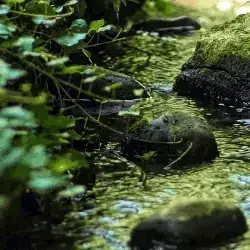

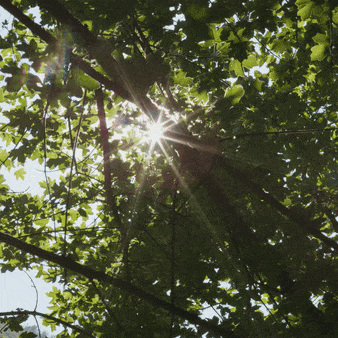

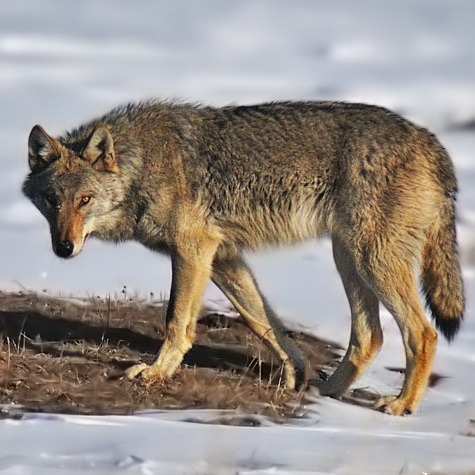
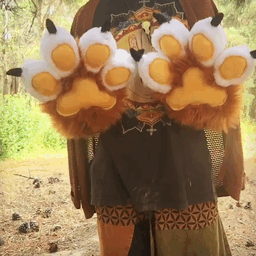


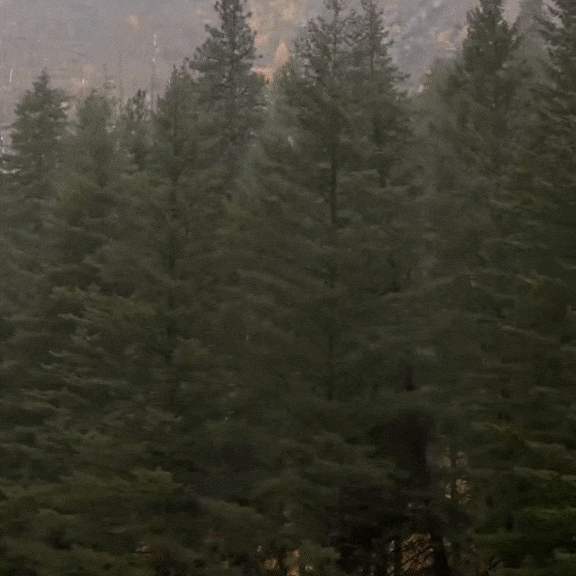
steppe wolf stimboard with nature & paw stims
for anyone
gonna make different animal stimboards frommm today to next friday. you can request one in my inbox.
the steppe wolf, or eurasian wolf, is a highly adaptable predator found across the grasslands and steppes of eurasia. steppe wolves are versatile hunters, preying on a variety of animals from ungulates to smaller mammals, and are known for their agility and cunning in diverse habitats including grasslands, forests, mountains, and deserts.
🐺 brown and green stimboard !!
🍂 requests open ✔
x | x | x
x | o | x
x | x | x

#bright lights#tw bright lights#not really..#sfw interaction only#stimboard#stim#stimblr#fursuit paws#paw stim#wolf stim#wolf stimboard#fursuit stim#tail stim#nature stim#nature stimboard#therian#canine therian#steppe wolf#creek stim#stream stim#fern stim
8 notes
·
View notes
Photo

Woolly Mammoth
The woolly mammoth, Mammuthus primigenius, is an extinct herbivore related to elephants who trudged across the steppe-tundras of Eurasia and North America from around 300,000 years ago until their numbers seriously dropped from around 11,000 years ago. A few last stragglers survived into the Holocene on island refuges off the coast of Siberia and Alaska. One of these - Wrangel Island - harboured the last known group of mammoths until around 3,700 years ago.
Continue reading...
131 notes
·
View notes